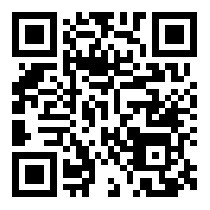首頁 ﹥ 最新消息 > 市場資訊 > Datacenters Drive 25GE Effort 2014-11-05
Datacenters Drive 25GE Effort
Ethernet group includes Google, M'soft
7/3/2014 09:40 AM EDT
LONDON – A group of five vendors will define specifications for 25 and 50 Gbit/second Ethernet in a move that, if successful, will demonstrate the power of large datacenters to drive technology. The effort also could accelerate adoption of two related technologies -- 100G Ethernet and silicon photonics.
Arista, Broadcom, Google, Microsoft, and Mellanox say they formed the 25G Ethernet Consortium to accelerate development of the speed grades to connect rack-mounted servers to top-of-rack (TOR) switches. They suggest big datacenters at Google and Microsoft are ready to move from using 1 and 10G links on individual servers to the new 25 and 50G speeds while the TOR switches upgrade from 10 or 40 to 100G.
Earlier this year three separate groups proposed 100 Gbit/s interfaces, mainly aimed at an emerging class of fast links for data center switches.
Google alone is said to have more than a million servers in its global datacenters. The big web server sites are now said to represent as much as 20% of all server sales, market watchers say.
Missing from the consortium are several other large, competing datacenter operators such as Amazon and Facebook. Also absent are other large networking chip and systems vendors such as Cisco, Intel, and Marvell.
The IEEE 802.3 group that traditionally defines Ethernet standards considered working on the 25 and 50G speed grades after a close non-binding vote in a March meeting. The group is now revisiting that decision.
In a straw poll at the March IEEE meeting, 30 engineers voted to start a 25G standards effort with 27 voting against and 21 abstaining. A total of 25 said their companies would support such an effort. The "consensus [was] not overwhelming," according to public minutes from the meeting, so a Microsoft datacenter manager who raised the issue declined to make a formal motion to start a 25G effort.
The consortium has not publicly released a specification, but comments from its members and analysts suggest its technology will be straightforward. It is expected to use components now coming on to the market supporting 25G serial lanes -- at least some of them geared to use with silicon photonics.
"25G and 50G Ethernet can leverage 100G QSFP28 breakout similar to how 10GbE is currently broken out from 40GbE using QSFP+," said Rochan Sankar, a product marketing director from Broadcom, in an email exchange with EE Times. "The 25G Ethernet specification requires a single 25Gbits/s serdes lane and associated PCS/MAC to be implemented in silicon -- which is simply a quarter of the serdes lanes used to support 100GE port over four lanes," he said.
"The 50G Ethernet specification uses two serdes lanes and an associated PCS/MAC layer to implement in silicon," Sankar said. "From a silicon design standpoint, both the switch and NIC have to handle PCS functions such as virtual lane alignment, auto-negotiation and forward error correction," he added.
